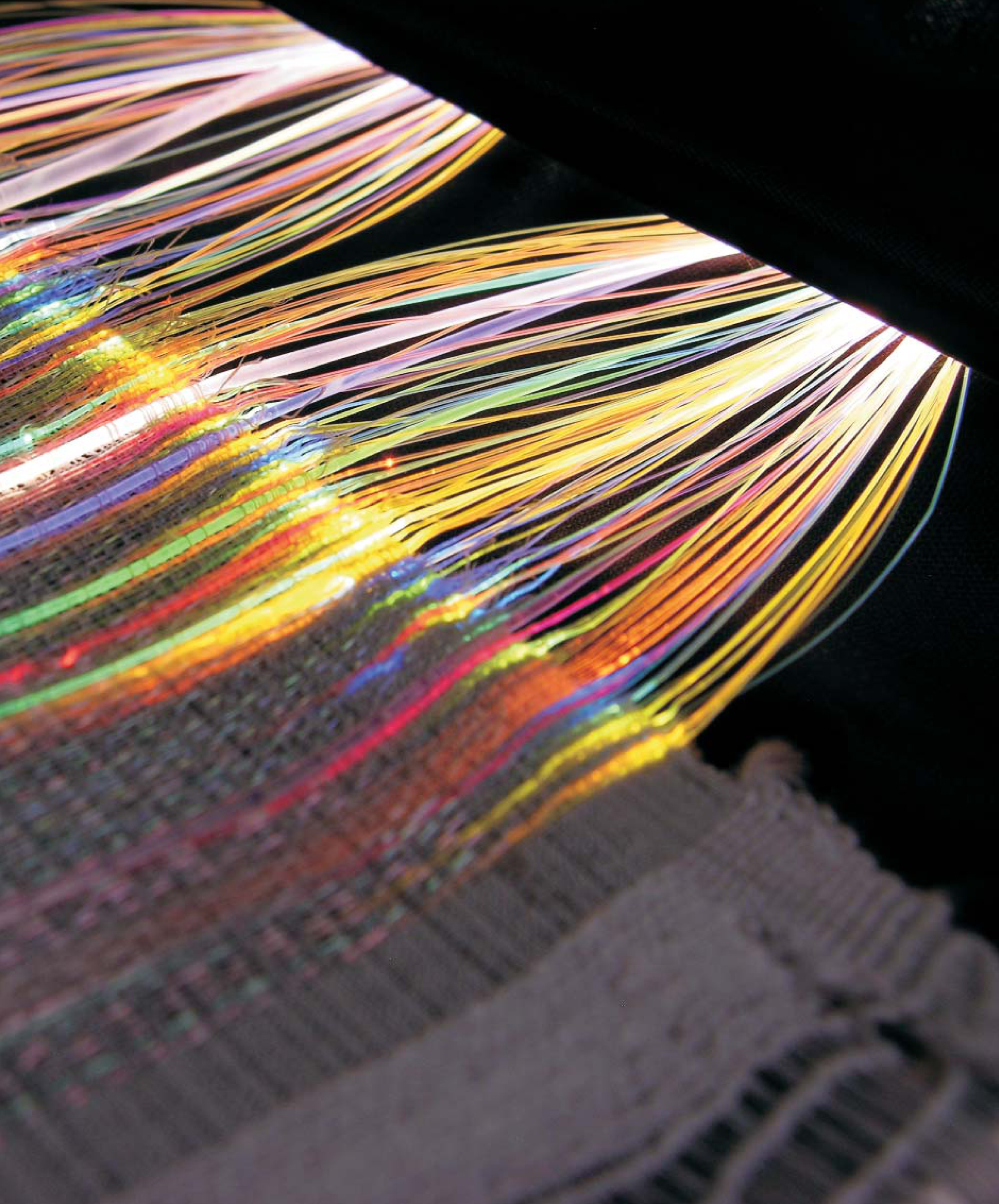Photonic fabric
DOI: 10.1063/1.3001851
From the silica fibers of the telecommunications cables under streets and oceans to polymer fibers that are finding application in such consumer settings as home networks and cars, optical fibers have become commonplace. Countless other uses have been found, including nonlinear optical elements, sensors, in vivo light sources and detectors, and children’s novelties. Now, thanks to work by Maksim Skorobogatiy of École Polytechnique de Montréal and his colleagues, a new use for fiber optics is emerging: textiles.
Shown here is a fabric that uses polymer photonic-crystal Bragg fibers as the weft. Surrounding the fibers’ solid core are 50 alternating layers of polymers with different refractive indices. The periodic alternating layers create a photonic bandgap that for certain frequency ranges—including the visible—confines light and guides it along the fiber core. Some of the light, though, escapes from the sides of the fiber. The fibers here are fed by a white light source; the emitted colors are determined by the fiber microstructure, and the intensity of the emission can be controlled by varying the number of multilayers in the Bragg reflector. Moreover, the fibers can be designed to reflect one color when externally illuminated and to emit another color while transmitting the light. By controlling the relative intensities of the ambient and guided light, the researchers can vary the overall fiber color; that opens opportunities for passive color-changing textiles.
To submit candidate images for Back Scatter, visit http://www.physicstoday.org/backscatter.html

(B. Gauvreau ,

